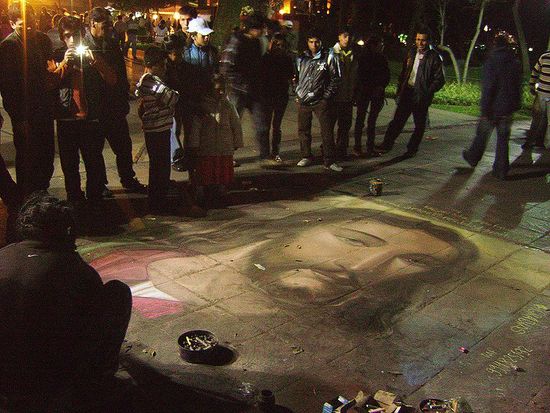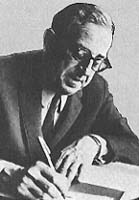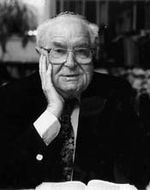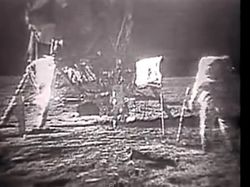Difference between revisions of "Category:Historical Jesus Studies--1960s"
Jump to navigation
Jump to search
| Line 42: | Line 42: | ||
|px= 38 | |px= 38 | ||
|content= | |content= | ||
* [[Hugh J. Schonfield]] (1901-1988) | |||
* [[Samuel G.F. Brandon]] (1907-1971) | |||
* [[Nicholas Ray]] (1911-1979) | |||
* [[Samuel Sandmel]] (1911-1979) | * [[Samuel Sandmel]] (1911-1979) | ||
* [[Schalom Ben-Chorin]] (1913-1999) | |||
* [[David Flusser]] (1917-2000) | * [[David Flusser]] (1917-2000) | ||
* [[Hugh Anderson]] (1920-2003) | * [[Hugh Anderson]] (1920-2003) | ||
* [[Pier Paolo Pasolini]] (1922-1975) | * [[Pier Paolo Pasolini]] (1922-1975) | ||
* [[Jeffrey Hunter]] (1926-1969) | |||
}} | }} | ||
Revision as of 06:53, 28 November 2019
History of Research (1960s) -- Notes
- In the 1960s we see, on one hand, the first signs of a rediscovery of the Jewishness of Jesus and, on the other, a stronger emphasis on his humanity and his involvement in political and social issues.
- The success of the works of Robert Aron and Nikos Kazantzakis relied exactly on their attempt to explore some "hidden" aspects of Jesus as a human being. In the movies, Jesus became younger, more approachable and more engaged in the social life of his own time. In 1964 Pier Paolo Pasolini earned international acclaim with his sensitive portrait of a very human Jesus as the champion of the poor and the destitute. On the scholarly level, Samuel G.F. Brandon drew attention to the affinities of the Jesus movement with the revolutionary party of the Zealots and to the strong social and political implications of Jesus's preaching.
- Jewish scholars, like Robert Aron and Schalom Ben-Chorin showed how the figure of Jesus fully "belonged" to first-century Judaism, and should no longer considered a taboo in Jewish studies. David Flusser in particular emphasized the great diversity of the Jewish experience in the Second Temple period and located Jesus "on the periphery of the Essenes."
Pages in category "Historical Jesus Studies--1960s"
The following 89 pages are in this category, out of 89 total.
1
- The True Mistery of the Passion (1960 Acton-Bond), TV film
- About Religion: The News on Good Friday (1960 ATV), TV episode
- The Mind of Jesus (1960 Barclay), book
- The Novelist and the Passion Story (1960 Dillistone), book
- Zur Frage nach dem historischen Jesus (Studies of the Historical Jesus / 1960 Fuchs), book
- The Secret Sayings of Jesus (1960 Grant), book
- (++) The Last Temptation (Ο τελευταίος πειρασμός / 1960 @1951 Kazantzakis / Bien), novel (English ed.)
- Once upon a Cross (1960 Mann), opera
- Es begann mit Jesus von Nazareth: die Frage nach dem historischen Jesus (1960 Zahrnt), book
- About Religion: Inquest at Golgotha (1961 ATV), TV episode
- The Man Born to Be King (1961 CBC), TV film
- The Prophet from Nazareth (1961 Enslin), book
- La passion du Christ comme thème cinèmatographique (1961 Estève), edited volume
- Jesús = Jésus (Jesus / 1961 Guignebert / Camino), book (Spanish ed.)
- King of Kings (1961 Rózsa), film music
- Hallmark Hall of Fame: Give Us Barabbas! (1961 Schaefer), TV episode
- Die verborgenen Jahre Jesu = Les années obscures de Jésus (1962 @1960 Aron / Mahr), non-fiction (German ed.)
- The Death of Jesus (1962 Carmichael), non-fiction
- Gesù nel suo tempo = Jésus en son temps (1962 @1944 Daniel-Rops / Degli Occhi), book (Italian ed.)
- Christus am Ölberge (Christ on the Mount of Olives / 1962 Scherchen / @1803 Beethoven), sound recording (oratorio)
- Christ the Lord (1962 Sloyan), book
- Las fuentes de la vida de Jesús (1963 Amiot/Brunot/Cristiani/Daniel-Rops/Daniélou / Riera), book (Spanish ed.)
- Gli anni oscuri di Gesù = Les années obscures de Jésus (1963 @1960 Aron / Miniussi), non-fiction (Italian ed.)
- Christus am Ölberge (Christ on the Mount of Olives / 1963 Bloser / @1803 Beethoven), sound recording (oratorio)
- Processo a Gesù (Trial of Jesus / 1963 Bolchi), TV film
- Nazare no Iesu (1963 Bornkamm), book (Japanese ed.)
- Unbekannte Jesusworte, 3rd ed. (Unknown Sayings of Jesus / 1963 @1951 @1948 Jeremias), book
- Les évangiles et l'histoire de Jésus (The Gospels and the Jesus of History / 1963 Léon-Dufour), book
- Pseudonyms of Christ in the Modern Novel (1963 Moseley), book
- Acto da Primavera (Rite of Spring / 1963 Oliveira), feature film
- The Historical Jesus (1963 Zahrnt / Bowden), book (English ed.)
- Der Sohn Gottes (The Son of God / 1963 Zierer), novel
- Primera fila: Proceso a Jesús (Trial of Jesus / 1964), TV episode
- (+) Jesus and Christian Origins: A Commentary on Modern Viewpoints (1964 Anderson), book
- The Historical Jesus and the Kerygmatic Christ (1964 Braaten, Harrisville), edited volume
- Studies of the Historical Jesus = Zur Frage nach dem historischen Jesus (1964 @1960 Fuchs / Scobie), book (English ed.)
- Das Problem des historischen Jesus (1964 Jeremias), book
- Il problema del Gesù storico = Das Problem des historischen Jesus (The Problem of the Historical Jesus / 1964 Jeremias / Pellizzari), book (Italian ed.)
- The Problem of the Historical Jesus (1964 Jeremias / Perrin), book (English ed.)
- Unknown Sayings of Jesus, 2nd ed. = Unbekannte Jesusworte, 3rd ed. (1964 @1963 @1948 Jeremias / Fuller), book (English ed.)
- The So-Called Historical Jesus and the Historic, Biblical Christ = Der sogenannte historische Jesus und der geschichtliche, biblische Christus (1964 @1892 Kähler / Braaten), book (English ed.)
- Yhdeksännellä hetkellä (The Ninth Hour / 1964 Karlsson), TV film
- Jesus and the Wilderness Community at Qumran = Jesus und die Wüstengemeinde am Toten Meer (1964 @1957 Stauffer / Spaltholz), book (English ed.)
- Was wissen wir von Jesus? (1965 Betz), book
- (+) The Foundations of New Testament Christology (1965 Fuller), book
- The Carpenter's Son (1965 Haughton), novel
- The Date of the Last Supper (1965 Jaubert), book (English ed.)
- Gli Agrapha di Gesù = Unbekannte Jesusworte, 3rd ed. (Unknown Sayings of Jesus / 1965 @1963 @1948 Jeremias / Soffritti), book (Italian ed.)
- Christus am Ölberge (Christ on the Mount of Olives / 1965 Josefowitz / @1803 Beethoven), sound recording (oratorio)
- Il sale della terra (1965 Monterosso), novel
- Christus am Ölberge (Christ on the Mount of Olives / 1965 Ormandy / @1803 Beethoven), sound recording (oratorio)
- Dawn of Victory (1966), film
- Passion et résurrection du Seigneur (1966 Benoit), book
- The Trial of Jesus / El Proceso de Cristo (1966 Bracho), film (es) MEX
- La vita di Gesù (The Life of Jesus / 1966 Craveri), non-fiction
- Le Christ, sagesse de Dieu, d'après les épîtres pauliniennes (Christ, Wisdom of God, according to the Pauline Epistles / 1966 Feuillet), book
- The Sayings of Jesus in the Writings of Justin Martyr (1967 Bellinzoni), book
- The Life of Jesus = La vita di Gesù (1967 @1966 Craveri / Markmann), non-fiction (English ed.)
- Cristo y el tiempo (1967 Cullmann / Mínguez), book (Spanish ed.)
- The Salt of the Earth = Il sale della terra (1967 Monterosso / Quigly), novel (English ed.)
- The Life and Teaching of Jesus (1965 Neil), book
- Johannes der Täufer (1967 Schütz), book
- Ainsi priait Jésus enfant (1968 Aron), non-fiction
- Processo a Gesù (Trial of Jesus / 1968 Bettetini), TV film
- What Do We Know about Jesus? (1968 Betz / Kohl), book (English ed.)
- Gesù di Nazareth = Jesus of Nazareth (1968 Bornkamm / Paschetto), book (Italian ed.)
- Jesus fra Nazaret = Jesus of Nazareth (1968 Bornkamm / Graabæk), book (Danish ed.)
- The Trial of Jesus of Nazareth (1968 Brandon), book
- The Light in the Wilderness (1968 Brubeck), oratorio
- Jesús (1968 Bultmann), book (Spanish ed.)
- Jésus aux origins de la tradition: matériaux pour l'histoire évangélique (1968 Cerfaux), book
- משפטו ומותו של ישו הנוצרי (The Trial and Death of Jesus / 1968 Cohn), nonfiction book
- Jesus in Selbstzeugnissen und Bilddokumenten (1968 Flusser), book
- Jesus and the Power of Satan (1968 Kallas), book
- Что знает история об Иисусе Христе? = What Does the Story of Jesus Christ? (1968 Kryvelev), book
- The Gospels and the Jesus of History (1968 Léon-Dufour / McHugh), book (English ed.)
- (+) Jesus Christus im vielfältigen Zeugnis des Neuen Testaments (Jesus / 1968 Schweizer), book
- Seduto alla sua destra (Black Jesus / 1968 Zurlini), feature film
- Critical Quests of Jesus (1969 Anderson), book
- Du Christ de l'histoire au Jésus des Évangiles (1969 Bouttier), book
- The Wednesday Play: Son of Man (1969 Davies), TV episode
- Jesus (1969 Flusser), book (English ed.)
- In Search of the Historical Jesus (1969 McArthur), edited volume
- La transfiguration de Notre Seigneur Jésus-Christ (1969 Messiaen), oratorio
- Passio et mors Domini nostri Jesu Christi secundum Lucam (The Passion and Death of Our Lord Jesus Christ according to Luke / 1966 Penderecki), oratorio
- Behold the Man (1969 Moorcock), novel
- (+) Jesus Rediscovered (1969 Muggeridge), book
Media in category "Historical Jesus Studies--1960s"
The following 18 files are in this category, out of 18 total.
- 1960 * Michaud.jpg 341 × 499; 12 KB
- 1960 * Aron.jpg 300 × 400; 22 KB
- 1960 * Bishop (novel).jpg 295 × 399; 36 KB
- 1960-T * Bornkamm en.jpg 354 × 499; 33 KB
- 1961 Ray N (film).jpg 327 × 475; 46 KB
- 1961-T * Waltari (novel) en.jpg 353 × 500; 43 KB
- 1962-T * Aron en.jpg 177 × 285; 5 KB
- 1964 Pasolini (film).jpg 231 × 325; 16 KB
- 1965 * Parrinder.jpg 326 × 499; 34 KB
- 1965 * Sandmel.jpg 332 × 499; 36 KB
- 1965 * Schonfield.jpg 247 × 403; 25 KB
- 1965 Stevens (film).jpg 288 × 416; 179 KB
- 1967 * Anderson.jpg 346 × 500; 29 KB
- 1967 * Perrin.jpg 480 × 640; 22 KB
- 1967 * Ben-Chorin.jpg 351 × 499; 18 KB
- 1967 * Brandon.jpg 382 × 582; 59 KB
- 1969 * Finegan.jpg 391 × 500; 73 KB
- 1969 Zacarias (film).jpg 214 × 317; 25 KB






















